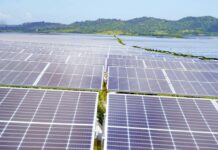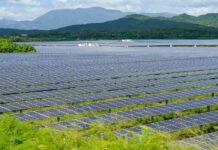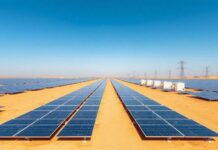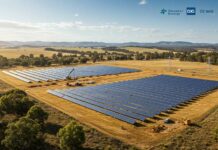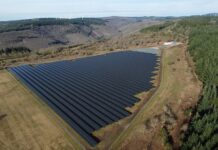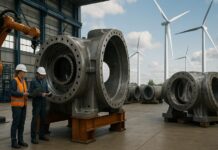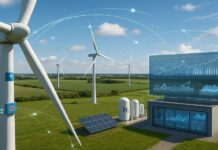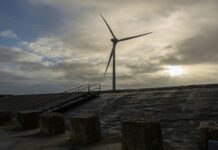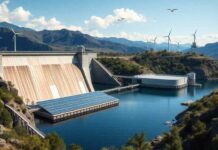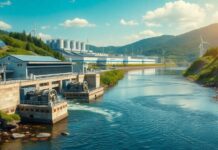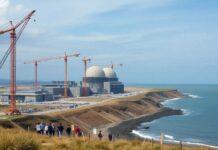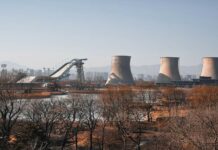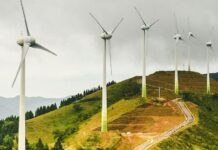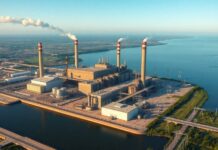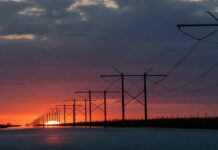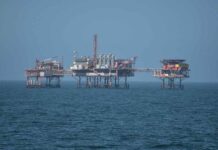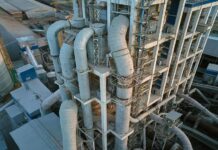Forward-looking Disney doesn’t fool around when it comes to waste. In fact, the billion-dollar operation has been separating its waste for more than 20 years and recently began using its organic waste to generate power. How that power is created was the focus of Monday’s tour of the Harvest Power Orlando Energy Garden.
The facility has 3.2-MW of capacity to produce power, 400 kW of which it uses to power its own operations. The other 2.8 MW are exported to the local utility, Reedy Creek Energy Services, at a wholesale rate of $0.06 per kWh. Reedy Creek Energy Services is the municipality created to serve Disney’s 25,000 acres of amusement parts and attractions in Florida.
The Harvest Power system starts with food waste and FOG (fats, oils and grease) from Disney as well as T-WAS (thickened waste activated sludge) from the nearby wastewater treatment facility. The food waste is continuously fed into a turbo separator, which removes packaging including tin cans and cardboard boxes. After separation, the food waste slurry is combined with FOG and T-WAS biosolids and sent to the anaerobic digester where it ferments for 28 days before heading to the mix tank for 4 days and then the post-digester. At the end of the process, Harvest Power is left with fertilizer pellets that it sells for $800 per ton. Disney has a 20-year contract with Harvest Power to supply food waste, which it does in a big way. According to Dole Doerr, plant operator, Disney delivers up to 100 tons of food waste every day and 20,000 gallons of FOG.
Through the anaerobic digestion process, the food waste, FOG and T-WAS create biogas, which is cooled, scrubbed and then fed into two 1.6-MW capacity generators to create power. During the power conversion process, waste heat is also captured and used in the drying process to make the fertilizer pellets. The electricity is fed into the grid and meets about 3 percent of Disney’s electricity demand.
Doerr said that the waste-to-energy plant produces 31,000 cubic meters of biogas every day, runs 24 hours a day and employs 10 people. The system is the largest private biogas facility in North America and cost $25 million to build when it was constructed in 2011. Harvest Power received an $8 million grant from the U.S. government and the remaining $17 million was privately financed. Entec Biogas GmbH and Environ built the anaerobic digesters.
As one might imagine, odor control is important. “It’s all about the odor,” said Doerr, who explained that the Odotech odor detection technology that is in use at the plant can not only detect when there is a strong odor in the air, but can also tell from which direction it is coming and how to neutralize it.

Odor control system plays a critical role in ensuring the facility operates efficiently and maintains a positive relationship with the surrounding community. The integration of such systems is a key factor in optimizing the performance of dry scrubber technologies and other air quality management solutions in waste-to-energy facilities.
Jake Jacobson of Ring Power took the 25 tour attendees (all with ear plugs) through the building that houses the two generators. Jacobson explained that Ring Power operates the two units plus one piece of switchgear and pointed out the substation, located right outside of building.
Guy Van Doren of LAN Associates is assisting Harvest Power with the minor modifications to the plant today and explained to attendees how the waste heat is captured and used. He said the Harvest Power Energy Garden works so well because it can use the heat in its operations. “When you have even distribution of heat and electricity and you can use the heat from the generator you have an ideal situation,” he said.


